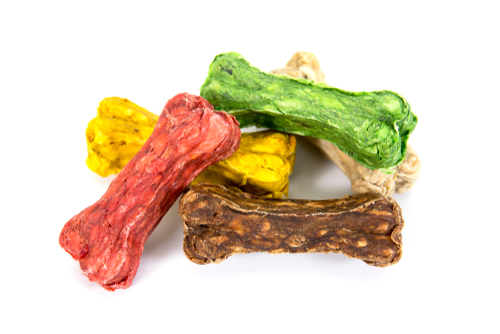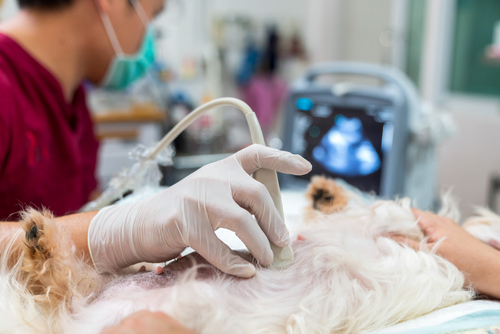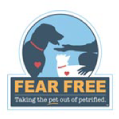It’s that time of year! Rawhide is out in full force. It’s sitting on endcaps, dyed red and green to look festive, it’s packaged as a bundle in mesh shaped stockings, and is formed into fun, holiday shapes. It’s also priced at a lower sale price to make it even more attractive and easier to add to your shopping cart.
 Why is rawhide bad for dogs?
Why is rawhide bad for dogs?
- The layer of skin used to create rawhide chews is put through a toxic chemical process (chemicals that have been detected in lab testing include formaldehyde, arsenic, and lead to name a few)
- Large, chewed pieces can become a choking hazard
- Rawhide can cause intestinal blockages
The processing procedure makes the animal skin into tough, durable chews. This is what makes rawhide attractive. When you have a puppy who is teething or a dog who needs to have their chewing needs met, you want something that will last a long time. This is also part of what makes these chews dangerous for our dogs.
I remember as a child how our dog was able to get that knotty end off as they chewed the bone and it softened. She then had this large, gummy piece that she was trying to swallow. It was too big and had to be taken from her mouth to prevent choking.
When your dog chews and softens the rawhide, she will eventually be able to break off pieces and swallow them. These pieces don’t break down in your dog’s system and now need to pass through in their whole form. This can cause a blockage in your dog’s system which often requires surgery to remedy.
As of March 23, 2021, Petco removed traditional rawhide from their store shelves for safer, long-lasting, and highly digestible options.
 What can I give my dog instead of rawhide?
What can I give my dog instead of rawhide?
Earth Animal No Hide Chews
Bully Sticks
SmartBones
Himalayan Yak Chews
These rawhide alternatives are safe to give to your dog. It’s important to know your dog’s chewing habits and observe them when giving them something new. Any chew can present a choking hazard if they try to ingest too big of a piece. When your dog swallows’ pieces of these rawhide alternatives, the pieces will break down and are able to be digested, ultimately being able to pass through your dog’s digestive system.












